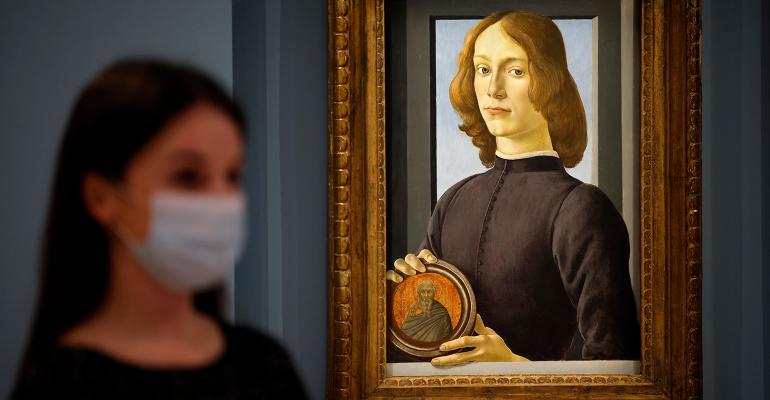The effects of COVID-19 reverberated across the world last year, and almost no sector was immune or left unscathed. The international art market was no exception, with state and country mandated shutdowns bringing the robust spring art fairs and auction season to a halt. Faced with thousands of furloughed staff and artworks stuck in limbo mid-transport, not to mention the human and economic tolls of the virus, the industry pivoted quickly to change the way business is done in order to survive, and possibly, may have even exceeded its own expectations.
Embracing Technology
Pre-pandemic, online auctions were primarily reserved for lower priced property such as watches, wine, whiskey, photographs and prints. Though the technology was certainly always available, clients were previously wary of inspecting prospective multi-million-dollar art purchases via Facetime or Zoom, let alone bidding on something sight unseen via live online auction. Perhaps to the surprise, or delight, of auction houses though, most clients proved receptive to the new technologically advanced methods and few consignors ended up pulling out from the newly reformatted spring and summer auctions. Reputation also played a key role course, with clients trusting their existing relationships with specialists. Auction houses also pulled out all the stops to cater to their clients’ needs by scheduling remote and socially distanced viewing appointments as well as bringing the art to the client altogether—in this case, setting up shop out east near their Hamptons, N.Y. retreats.
Change in the Right Direction
Despite the setbacks and inability to conduct business as usual, auction houses were able to pivot and produce a record-breaking summer auction season, both domestically and abroad. The reason for their success is two-fold, as galleries and auction houses worked diligently to adapt to the new “norm” of doing business and many clients were either stuck home and stress buying as a way to relieve their pandemic-fueled anxiety or seeking alternative investments during uncertain times (art has long been viewed as one such diversification option).
The pandemic didn’t only bring on a change for the better in logistics, it also expanded what’s on offer. Auctions became more frequent and creative, with a larger array of categories. The art market also embraced changes to the way property is offered—for example doing exclusive sales and “drops” through the app “Fair Warning,” not unlike the ubiquitous way the fashion world does “drops” of limited-edition sneakers or other designer collabs. Collaborations among auction houses and galleries also became a new norm, with both standing to gain from the partnerships (and expanding their consumer reach).
*This article is a modified excerpt of the original appearing in the January 2020 issue of Trusts & Estates. To read in full, click here.





